Aufgrund ihrer...
Metal box packaging production method and technical requirements
In the metal box packaging production project, the metal packaging box industrial technology is relatively cumbersome and demanding. This article introduces what industrial technology is needed in the production of metal packaging.
In the daily life of consumers, everyone can always see all kinds of demands on the production of metal box packaging, in order to make the metal box packaging have a sense of texture and ritual in life. Choosing metal materials for packaging production is more beautiful and fashionable. In order to make the market a new vane, we usually choose industrial packaging for practice. How can people be able to design under the conditions of choosing metal packaging design? What about making a better metal packaging?
The metal packaging box is a kind of packaging that we all prefer. It can play the role of moisture-proof, waterproof and anti-fall, and can also be stored for a long time. And we often print LOGO or slogans on the surface of the metal. The logo can play a role in long-term publicity. So how many methods do you know about the production of metal boxes?
After printing, metal substrates generally go through two processes: glazing and forming. The purpose of the gloss oil is to protect the ink film, increase the gloss of the printed matter, make the product more beautiful, and enhance the ability to withstand the bending and mechanical impact during the can-making process. It should be pointed out that since the manufacture of metal box packaging products is carried out in an automatic assembly line, printing is one of the key processes, and the substrate is often molded, and in the molding process of the product, there are quite a few process facts. The above was done before printing. In order to ensure the integrity of the system, this article does not make a strict distinction between pre-press and post-press processes.
One, molding processing technology
1. Stamping process. Metal packaging containers, whether it is a box or a can, are mostly formed by the principle of metal stamping through two major processes of separation and plastic deformation from the perspective of the forming process.
The separation process is a stamping process that separates the stamping parts and the sheet material along the required contour line and obtains a certain cross-sectional quality. The separation process often includes operations such as cutting, blanking, punching, notching, trimming and trimming.
Plastic deformation process is a stamping processing method that makes the stamping blank undergo plastic deformation without destroying it, so as to obtain the required shape and dimensional accuracy. Usually there are three types of bending, stretching and forming. Bending includes bending, crimping, twisting, bending, rolling, bending, drawing bending and other operations; stretching is mainly deep drawing and thinning and deep drawing; there are many forming methods, including turning, flanging, flaring, Narrowing, forming, crimping, bulging, spinning, shaping, and leveling operations.
2. Canning process. The traditional production method of metal packaging cans is: first cut the iron sheet blank into squares, and then cut the blank
The material is rolled into a cylinder (i.e. cylinder) and then the formed longitudinal joint line is soldered to form a side seal. One end of the cylinder (i.e. tank bottom) and the round end cover are mechanically formed into a flange and rolled Press sealing (this is double crimping seam) to form the can body; the other end is filled with the product and then the can lid is sealed. The metal container is composed of three parts: the bottom, the body and the lid, so it is called a three-piece can. This can-making method has basically not changed much for more than 150 years, except that the degree of automation and processing accuracy has been greatly improved. In recent years, the welding seam of the side seal has been changed to fusion welding.
A new canning principle appeared in the early 1970s. According to this principle, the can body and the bottom of the can are a whole, which is stamped from a round flat blank and sealed after being filled into the product. This is a two-piece can. There are two forming methods for this kind of can: stamping-thinning and drawing method (ie punching and drawing method) and stamping-re-stamping method (ie deep drawing method). These technologies themselves are not new. The punching and drawing method has been used to make bullet casings as early as World War I. The difference in can making is the use of ultra-thin metal and the high production speed (annual output can reach hundreds of millions).
(1) Manufacturing of three-piece cans. The production process is: use a shearing machine to cut the coil into a rectangular plate; paint and print; cut into a long blank; roll into a cylinder and weld the side seams; repair the joints and coatings; cut the cylinder; form a concave Grooves or corrugations; flanges are pressed out at both ends; rolled back cover; inspected and coded on the pallet.
. ①Processing of the cylinder. The key process is crimp forming and welding side seams. There are three ways to seal the side seams: soldering, fusion welding and glueing. The tin solder of the tin solder can is generally composed of 98% lead and 2% tin. The cylinder making machine that rolls the slab into a cylinder is used as a pair with the side seam sealing machine for soldering. In the cylinder making machine, the edge of the slab is cleaned and bent into a hook shape, so that it is easy to fix when forming a cylinder. Then the cylinder passes through a side sealer, adds solvent and solder, uses a gas spray gun to preheat the sealing area, and further heats the solder through the longitudinal soldering roller to fill the joints, and then use a rotating scraper to remove the excess that is mainly in the form of drops The solder is removed. Fusion welding is based on the principle of consumable wire electrode and resistance welding process. Earlier fusion welding systems used large lap joints to raise the temperature of the steel to the melting point and welded under lower roller pressure. The latest welding machine adopts a small overlap (0.3~0.5mm), and the metal temperature is just below the melting point, but the pressure of the welding roller should be increased to forge the two overlapping surfaces together. The weld destroys the original or painted smooth surface of the inner surface, leaving exposed iron, iron oxide, and tin on both sides of the weld. In order to prevent the product from being contaminated and the welding seam from being corroded by the product, in most cases the side seal needs to be coated for protection. Dry only
The side seal of the can of the dried product can be glued. That is, the nylon tape is used to paste the longitudinal seams, and the nylon tape is melted and condensed after the cylinder is formed. The advantage is that the original edge can be completely protected, but it can only be used for no
②Simplified post-processing. In simplified tin steel (TFS), because the melting point of tin is close to the melting temperature of plastic. The flanges must also be machined at both ends in order to install end caps. For processed food cans, the cans may be subjected to external pressure during processing, or the inside of the cans may be in a vacuum state during storage. In order to increase the strength of the tank, ribs may be made on the surface of the simplified form. This process is called corrugation. In order to improve production efficiency, the length of the shallow container is usually two to three can body length. At this time, the cylinder is cut in the first process. The traditional method is to cut the slab on the cutting machine (scoring machine) before forming. Make an unbroken cutting on the top. However, due to the recent appearance of a can trimming shear developed for the production of two-piece cans, it has been possible to use this shear for the cutting of cylinders that are not pre-scored.
(2) The manufacture of two-piece cans.
The two molding methods for making two-piece cans both use sheet metal molding. This method is based on the "fluidity" of the metal exhibited by the rearrangement of the crystal structure under the action of complex stress, and the material should not break during this process.
①Stamping and forming.
That is, a punch of the punching machine is used to punch a flat plate into a cylindrical die, so that the flat plate is deformed into a cylinder. The diameter of the cup formed after the initial punching can be reduced by applying a re-punching process. In the re-stamping process, a punching sleeve is used instead of the die, which is installed between the punch and the inner diameter of the punching cup. The rule of equal area determines that the increase in height is accompanied by the reduction in diameter. The re-stamping process can be repeated again, and the diameter of the book is gradually reduced within a certain limit, and the metal is prevented from breaking. ② Thinning and stretching of the cup wall. The punched cylindrical cup is sleeved on the punch, and the punch is squeezed into a die along the axial direction. The gap between the die and the punch is smaller than the thickness of the cup wall, so that the wall thickness is unchanged while the diameter remains the same. Get thinner. The metal volume of the barrel after thinning is equal to the metal volume of the cup during the thinning and stretching process, and it is also equal to the metal volume of the original slab. In the manufacture of cans, this process is repeated two or three times. The punch with the cup passes through a series of dies one after the other, one stroke through one die. The most convenient way to install the stamped Lin on the punch is to perform a re-stamping operation before the first thinning and stretching.
③The manufacture of cupping.
The manufacturing process of punching and cupping is roughly as follows: unfolding ordinary ribbon coil; Xu lubricant; blanking and punching the cup; re-stamping; thinning and stretching of the side wall of the cup; bottom forming; simplified trimming to the correct height; cleaning and processing . For dry beverage cans, external surface coating, printing performance, internal surface coating, flange forming and closing of the open end are also required. For food cans, the outer surface coating, open end flange forming, cylinder corrugation and inner surface coating are carried out during the cleaning process. The lid or can end is made of pre-coated plate on a multi-mold press, and the can lid is pressed with corrugations (reinforcing ribs) to bear internal and external pressure. The last process here is hemming to form a double hemming seam. Place packing on the final seal to act as a sealing gasket.
④ Manufacturing of metal cans.
The steps of manufacturing metal cans are as follows: cutting the thin strip coil into spiral-shaped sheets; coating and finishing the sheet (coated coils can also be used); blanking and punching the wafer blanks and punching again (one time or Two times, depending on the size of the tank); forming the bottom of the tank; trimming the flange to the correct width; inspection and sterilization. As with the punching and drawing process, a multi-die cup punching machine is used to load and unload materials from wide thin strip coils or plates and punch them into shallow cups. The shallow cup is gradually reduced in diameter and increased in height through one and two re-stamping. When the final stamping is stopped to a certain extent, a flange will be left on the can, just like all other sheet metal forming processes. Irregular edges should be cut off, and the bottom of the tank should be processed into the required shape. 2. Processing equipment The main equipment for can-making processing includes various stamping forming machines, shearing blanking machines and other auxiliary equipment. There are so many types of these devices that it is impossible to introduce them. In view of the characteristics of modern canning industry that mostly adopts automated production, this article only takes the composition of the punching and cupping production line as an example to give a brief explanation. The thin plate coil is sent to the unwinding machine (unwinding rack) by the transport vehicle. The unwinding machine generally has two arms, one arm faces the sheet roll transporter, the other arm feeds the press, and the sheet roll can be replaced by rotating the arm. The sheet roll is coated with lubricant on both sides through the lubricant coating equipment, and passes through a pair of rubber rollers to remove excess lubricant. In older production lines, the lubricant is mixed with the correct concentration and then placed in one In the container, add it to the lubricant tank when needed. In newer production lines, an external circulation system is generally used, which can perform temperature control, continuously filter and maintain a constant quality of lubricating oil. The cup punch press is a specially designed double-action press, which first punches down a number of round slabs, and then punches the round slabs into a shallow cup shape. These two actions are completed in one trip. The function of the cup wall thinning and deep drawing machine is to transform the cup into a cylinder with the correct distribution of the side wall thickness, and to transform the bottom of the cup into a design shape that can resist internal pressure during use. Here, the punch cup is re-punched and left on the punch, and then passes through three thinning and drawing rings in sequence to thin the cup wall. At the end of the stroke, enter the auxiliary press to form the arch and the bottom of the cup. At the beginning of the return journey, with the help of compressed air sent from the punching tube, the spring ejector rod unloads the can body from the punch, and the can is sent out of the machine by the conveyor belt. Each cup wall thinning and deep drawing machine works in conjunction with an edge trimming machine. The edge trimming machine has two forms: rail type and roller type. There are many cores on the rotating frame of the guide rail type trimming machine, and the edge of the can is cut between the rotating core and the stationary rail. On the roller type trimming machine, one end of the can is fed between two rollers and rotates around its own axis, and the two rollers move closer to each other to complete the trimming action. After the can is trimmed at a fixed height, the opening of the can is facing downwards, buckled upside down on the grid conveyor belt, and transported in large quantities to a series of cleaning chambers equipped with spray nozzles, which are stamped, thinned and stretched with detergent The lubricant used at the time is washed off, and finally rinsed in ion-free water to ensure no stains and dry. Take back a flange forming machine to close and flange the beverage can, while corrugating and flange forming the food can. In order to avoid the roughening of the metal axial surface during thinning and drawing, the flange forming generally adopts a spinning process. The neck of the top of the beverage can can be retracted and formed with a mold after spinning the flange.
The most important goal of metal box packaging is to be able to have better selective gloss and wear resistance, showing some of the attributes that metal should have, and the production of such packaging boxes in this fashion full of high-end texture and other human needs, can make Consumers accept and love.

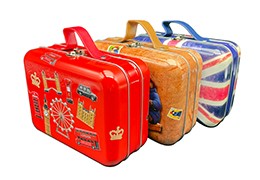

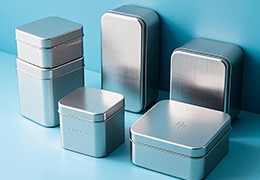
.jpg)
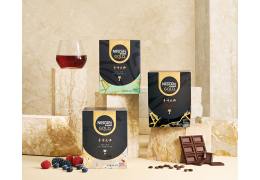
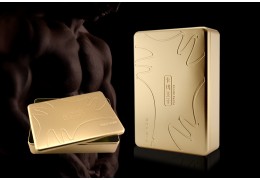

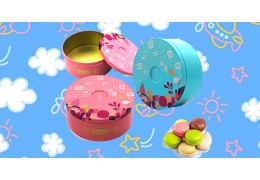
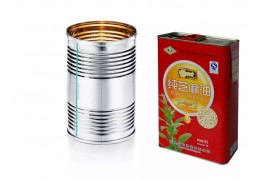

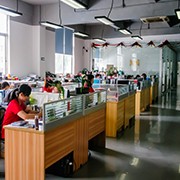


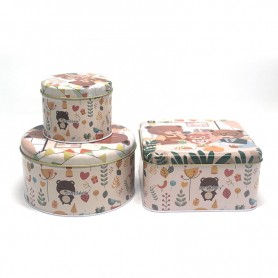
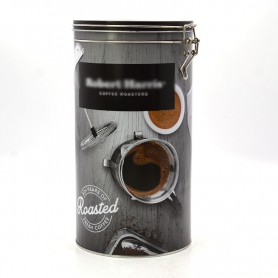
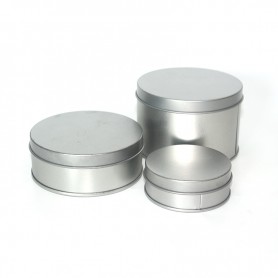


Latest comments